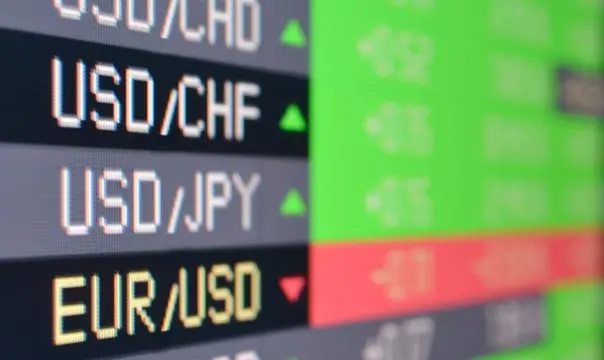Capitalize on today’s evolving market dynamics.
With markets in flux, now is a good time to meet with a wealth advisor.

The U.S. dollar’s sharp decline early in 2025 boosted foreign investment returns, but its value later stabilized.
Global fund flows, interest rates, trade balances and inflation expectations influence currency values.
Currency fluctuations affect overseas investment returns, but long-term investors should focus less on short-term dollar trends.
Fluctuating currency values impact global investment portfolios. The U.S. dollar has moved within a narrow range against other currencies in recent months, contrasting sharply with its decline to start 2025. In the first half of 2025, the dollar dropped 10.7% against a basket of major currencies (the U.S. Dollar Index, which includes the Euro, Japanese Yen, and British Pound). Since mid-year lows, the dollar has rebounded by 1.7%. The early-year decline boosted non-dollar investments, causing foreign stocks to outperform U.S. stocks. In this year’s second half, the dollar’s modest rise balanced U.S. and foreign stock performance in dollar terms.
Trade and financial asset flows, along with investors’ future supply and demand expectations, drive currency values. “Relative currency values reflect the global flow of funds,” says Rob Haworth, senior investment strategy director with U.S. Bank Asset Management Group. “When the dollar strengthens, it means more foreign money is flowing into the U.S. than the other way around.” Current and expected interest rates, financial asset investments, trade flows and inflation represent four key demand drivers.
“Relative currency values reflect the global flow of funds. When the dollar strengthens, it means more foreign money is flowing into the U.S. than the other way around.”
Rob Haworth, senior investment strategy director with U.S. Bank Asset Management Group
High relative interest rates or expectations for higher rates can attract investors to bonds, assuming similar credit quality, pushing currency values higher. A trade surplus signals greater currency demand, as foreign buyers purchase more domestic goods. In contrast, high inflation erodes a currency’s purchasing power, putting downward pressure on its value compared to currencies in low-inflation economies.
Two main factors caused the dollar’s decline in early 2025: President Trump announced tariffs, raising inflation expectations, and investors anticipated more Federal Reserve rate cuts. Rising inflation and lower rate expectations weakened the dollar. In the second half, stable inflation and Fed rate cut expectations kept the dollar relatively rangebound. “Changes to rate cut expectations could impact the value of the dollar, since the European Central Bank, Bank of England, Bank of Canada, and others already cut rates ahead of the Fed. The anticipation the Fed will follow in coming quarters has kept the dollar from appreciating much so far in the second half,” notes Bill Merz, head of capital markets research for U.S. Bank Asset Management Group.
A stronger dollar lowers the cost of U.S. imports. For example, a German car that retails for €50,000 would cost $60,000 in the U.S. at an exchange rate of $1.20 to €1. If the dollar strengthens to $0.90 to €1, the car’s U.S. price drops to $45,000, saving U.S. consumers money.
However, a strong dollar reduces U.S.-based multinational company revenues . When companies convert foreign sales into dollars, net income decreases. A stronger dollar also makes U.S. exports less competitive, raising prices for foreign buyers and potentially reducing sales. “If the dollar continues to strengthen, it could dampen corporate earnings, which could impact stock market performance, in the short term,” says Haworth.
Haworth advises investors not to focus too much on currency movements when evaluating domestic stocks. Currency values matter more for U.S. investors in overseas asset classes.
For example, the MSCI EAFE Index, which tracks developed market stocks outside the U.S., returned 18.1% in local currency terms through October 6, 2025. However, U.S. investors earned 28.1% after converting gains back into dollars, as the dollar notably weakened in the first half of the year. In contrast, when the dollar strengthens against other currencies, the conversion process reduces a U.S. investor’s net return after factoring the currency exchange impact.
“Currencies fluctuate less than stocks overall, and predicting their direction is difficult because numerous factors that influence relative currency values,” says Haworth. “Equity investors, in particular, should be somewhat insensitive to short-term dollar trends when positioning long-term investment assets.”
While currency considerations may not play a decisive role in your investment strategy, you should discuss them with your wealth management professional, especially if your portfolio includes overseas investments.
The S&P 500’s recent rollercoaster performance has investors wondering what lies ahead for the stock market.
We can partner with you to design an investment strategy that aligns with your goals and is able to weather all types of market cycles.